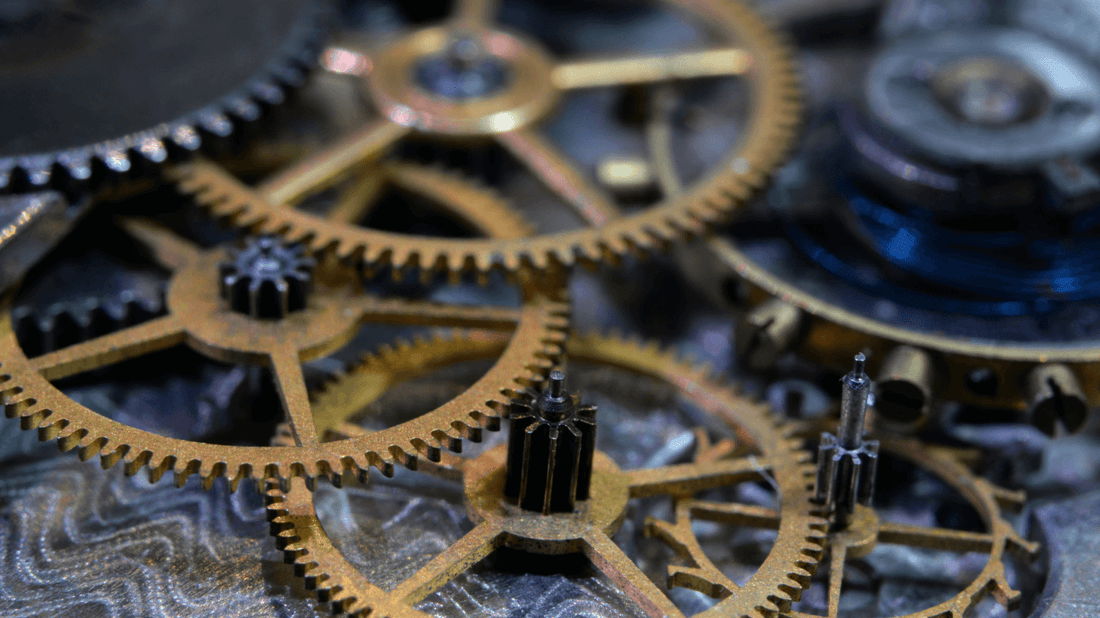
The Science Of Watch Accuracy - How Do They Measure It?
At the core of every watch lies its movement, often referred to as the 'heart' of the watch. The movement's quality and design play a pivotal role in determining the watch's accuracy.
Mechanical Movements: These are powered by a mainspring, a coiled wire of special metal that is wound by turning the crown of the watch. As it unwinds, this mainspring produces energy to power the watch. The balance wheel, which oscillates back and forth, divides this energy into controlled, equal parts, ensuring the hands move consistently. The precision of this oscillation is crucial for accuracy.
Quartz Movements: Unlike mechanical movements, quartz movements are powered by a battery. The battery sends an electrical signal through a small quartz crystal, causing it to vibrate. These vibrations are counted by the circuit and converted into a single pulse every second, driving the motor to move the watch hands. Due to their nature, quartz watches are generally more accurate than mechanical ones.
How Do They Measure A Watch's Accuracy?
A watch's accuracy is determined by comparing its timekeeping to a known standard, usually an atomic clock. This involves setting the watch to the exact time of the atomic clock and then observing any deviation over a certain period of time, usually 24 hours. After this period, the difference between the watch's time and the atomic clock is the watch's daily rate of accuracy.
If, after 24 hours, a watch is 5 seconds quicker than the atomic clock, its daily rate is +5 seconds. It's important to note that accuracy varies depending on the watch's position, temperature, and other factors. To have a thorough grasp of a watch's accuracy, it is frequently tested in various postures and temperatures.
Some institutions, like the Official Swiss Chronometer Testing Institute (COSC), provide certification for watches that meet strict accuracy criteria. When a watch is described as a 'chronometer,' it has passed these rigorous tests and is certified to be highly accurate.
External Factors Influencing Accuracy
While the movement is integral, external factors can also influence a watch's accuracy.
Temperature: Mechanical watches, especially vintage ones, can be sensitive to temperature changes. Extreme cold can make the oil inside the watch viscous, causing it to run slow, while extreme heat can cause the watch to run fast.
Position: The position in which you leave your watch when not wearing it can affect its accuracy. This is especially true for mechanical watches. For instance, leaving a watch crown-up might make it run differently than if it were left dial-up.
Magnetism: Watches can become magnetized if they come into close contact with magnetic fields, such as those produced by electronics. A magnetized watch can run several minutes fast per day.
Wear and Tear: Over time, the lubricants in the watch can dry up, affecting its accuracy. Regular servicing, usually every 4-5 years, can ensure the watch remains accurate.
The Pursuit of Perfection: Chronometers
In the quest for accuracy, certain watches undergo rigorous testing to be certified as chronometers. These watches are tested under various conditions, including different temperatures and positions, to ensure they meet strict accuracy standards. A watch that has been certified as a chronometer is a testament to its precision and reliability.
pOrtahl's Commitment to Accuracy
At pOrtahl, precision isn't just a buzzword; it's a commitment. Our Peacemaker watch is powered by the Swiss-made STP1-11 automatic movement. This movement, a direct counterpart to the renowned ETA 2824-2, has been making waves in the watch industry, especially since the Swatch Group's decision to limit the supply of ETA movements outside their group.
The STP1-11 stands out for several reasons:
Performance: The movement runs at a daily variation of -3s/day to +7s/day, translating to an on-wrist performance of approximately +/- 2 to 4 seconds per day. This level of accuracy is very much in line with the original ETA, which isn't COSC certified either.
Finishing: The STP1-11 boasts impeccable finishes that reflect the ETA original. From the Cote de Geneve decoration on the rotor to the perlage decoration visible on the balance cock, the attention to detail is evident.
Jewelling: A unique feature of the STP1-11 is its jewelled barrel bridge. This added jewel for the upper barrel arbor enhances the movement's longevity, as the barrel bridge can easily wear out. This jewel addition ensures reduced friction and wear, adding to the movement's lifespan.
At pOrtahl, we believe in offering the best to our customers. By choosing the STP1-11 for our Peacemaker, we ensure not just accuracy but also longevity and a touch of Swiss luxury. It's our way of showing that we value both form and function, ensuring that our watches are not just stylish but also precise and reliable.
In Conclusion
The science behind watch accuracy is a blend of craftsmanship, engineering, and external influences. While the pursuit of absolute accuracy continues, understanding the factors that influence it can help watch enthusiasts appreciate the marvel that is horology even more. After all, in the world of watches, every second counts.
